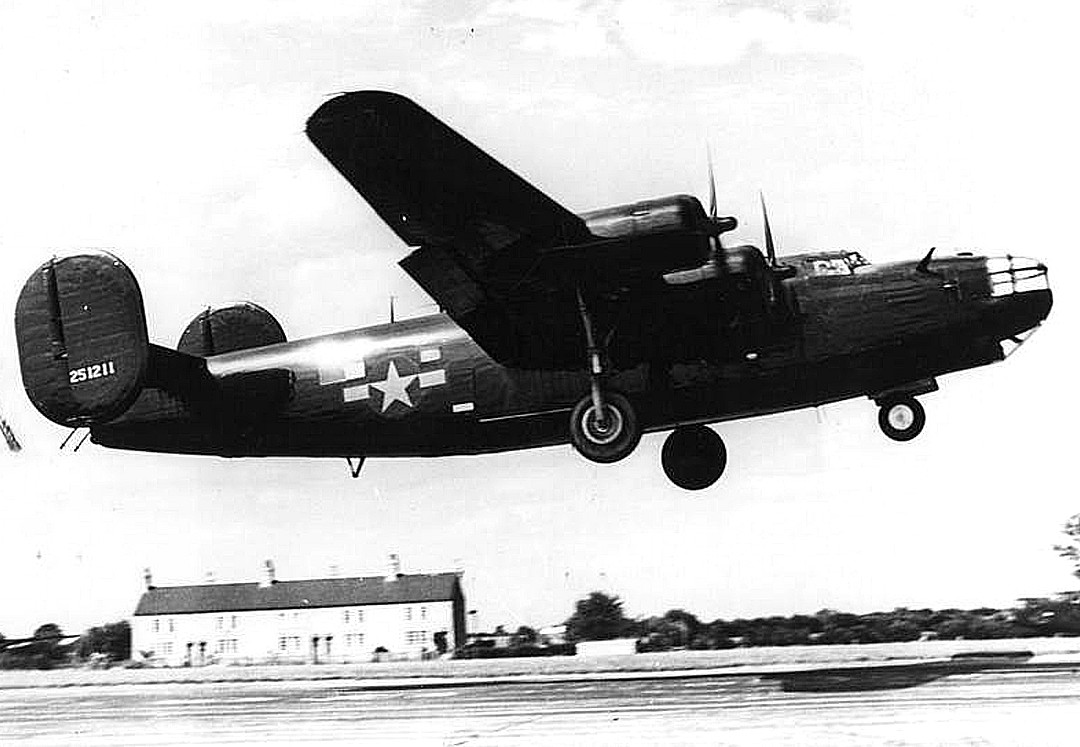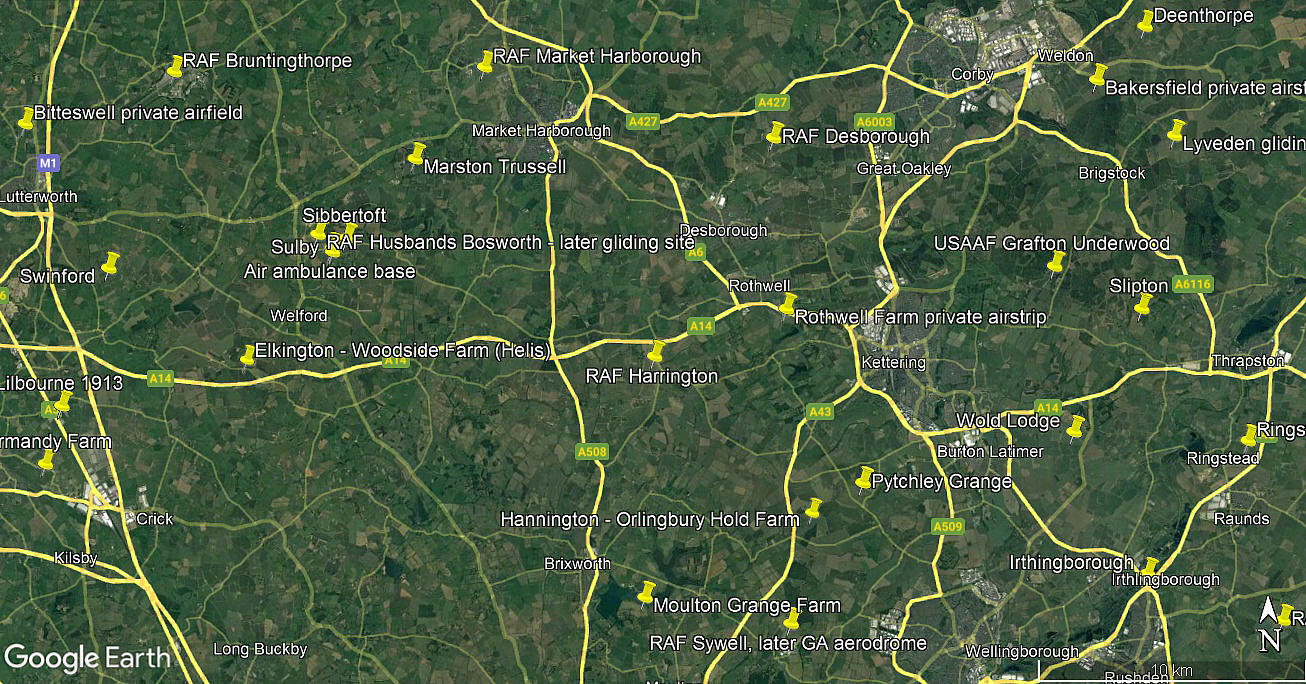Harrington
HARRINGTON: Military aerodrome
Note: These three pictures were obtained from Google Earth ©
Another example of a WW2 airfield that, 70 years later, can still be clearly defined. Well, almost.
Military users: WW2: RAF
Originally planned as a SLG (Satellite Landing Ground) for No.84 Operational Training Unit at RAF DESBOROUGH and opened in September 1943. Probably an all-over grass airfield. The later airfield with hard runways and full facilities was built by the 826th and 852nd Engineer Battalions of the US Army and was open for operations in the spring of 1944. It was given the Station No. 179
8th USAAF 14th Bombardment Wing
492nd & 801st Bomb Group
856, 857, 858 & 859 Sqdns (Consolidated B-24 Liberators)
850th Bombardment Squadron (Boeing B-17G Flying Fortress)
Note: The 801st Bomb Group came here first, and became known as 'The Carpetbaggers' flying their B-24 Liberators on Special Operations missions, (in conjunction with the RAF). It appears that the 801st specialised in missions to southern France, with considerable modifications to the standard B-24. Later being absorbed into the 492nd Bombardment Group, which also flew Douglas A-26 Invaders and also the de Havilland DH98 Mosquito.
Location: N of the new A14, 5nm W of Kettering
Period of operation: USAAF: 1943 to 1946. RAF missile base: 1959 to 1963
Runways: WW2: 18/36 1829x46 hard 05/23 1280x46 hard
11/29 1280x46 hard
A MICHAEL T HOLDER GALLERY
Note: The photographs are from the American War Museum.
Note: The second item is a photograph of the Consolidated B-24 Liberator, serial 42-51222, of the 492nd Bomb Group nicknamed ' Miss Fitz'. The fourth item is of a Douglas A-26 Invader in the spring of 1945, serving with the 492nd Bomb Group.
Although of poor quality this picture of the Boeing B-17G Flying Fortress, serial 43-37516, named 'Tondelayo' is of special interest. It appears that the 788th and 850th Bombardment squadrons were given missions to drop leaflets on Belgium, Denmark, France, Germany, Greece, Italy, Norway, Poland, The Netherlands and in the Balkans. It seems that some of these leaflets were a trusted source of news for those being occupied by the Nazi regime. Others gave an offer of safe passage through Allied lines to defecting Germans. It is claimed that 77% of Gerrman troops captured in France after D-DAY either had one, or had read one. It is claimed that anybody in possession of one, if caught by the Germans, carried an automatic death penalty!
It appears the 850th Bombardment Squadron had a presence here.
A STORY
I trust you’ll appreciate this story from ‘Stirlings in Action with the Airborne Forces’ by Dennis Williams whereby he quotes from Noel Chaffey who served as aircrew with ‘B’ Flight on 620 Squadron flying Stirlings out of FAIRFORD in GLOUCESTERSHIRE in August 1944 shortly after the ‘D-Day’ invasion.
“July and August 1944 were busy months for us, during which our crew completed eleven operations. Included in these was a special one, we were going to Harrington, the home of the ‘Carpetbaggers’, who were flying B-24 Liberators. (Ed note: This was a rather special RAF/USAAF exercise). It was a lovely afternoon on 5th August as we took off from Fairford at 1500hrs, landing at Harrington forty-five minutes later. We were directed to a standby area where we seemed to be surrounded by half the station, for this was their first close-up view of a Stirling, the RAF’s big bomber."
"Also on hand was a motion picture camera team, commanded by Captain John Ford. (My note: Wot? Could this really be the John Ford, the famous director …John Wayne not in sight let alone a tribe of attacking Indians?). They had been sent to England to cover aspects of American involvement in the European war and cooperation with other forces.”
THE CRUNCH
And now for the crunch topic: “Our Flight Commander was to do the briefing later that afternoon, after a meal. I remember we had pork and red cabbage, such a wonderful change from ‘bangers and mash’, followed by real ice-cream of various flavours and colours. I later learned that this was shipped in powder form from America, then mixed and poured into containers. These would be loaded into a B-24 which would be sent up on an air test at high altitude for a couple of hours, to freeze the mixture!”
In 1959, some say 1958, HARRINGTON became a RAF Bomber Command ‘Thor’ IRBM missile base.
We'd love to hear from you, so please scroll down to leave a comment!
Leave a comment ...
Copyright (c) UK Airfield Guide


























